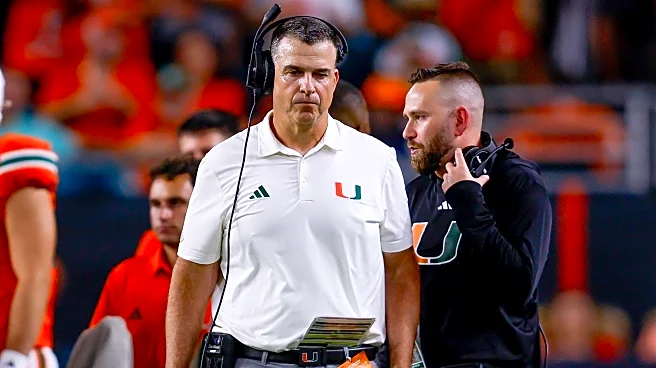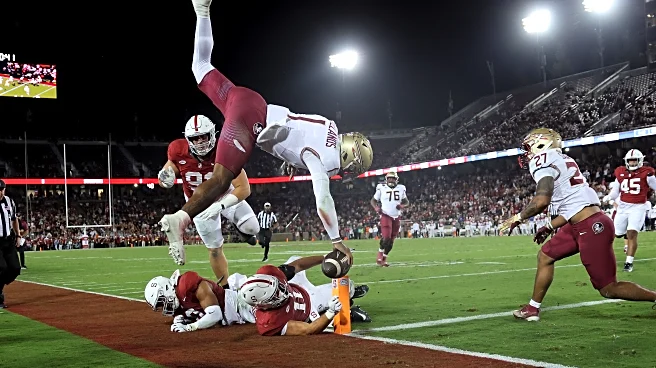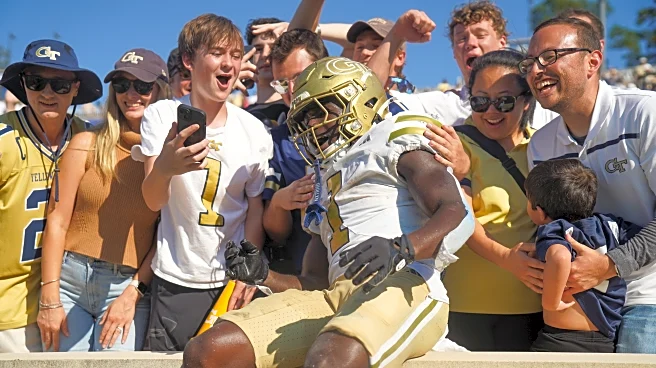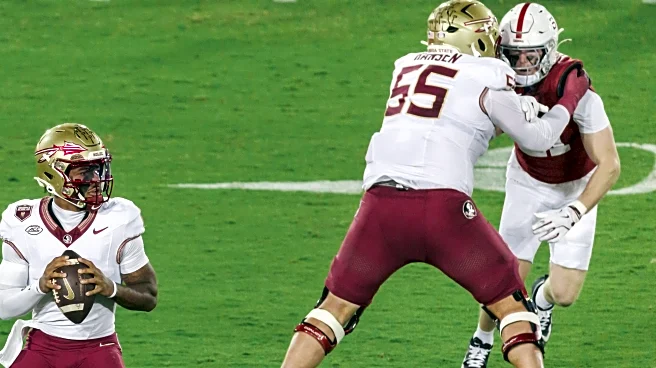What's Happening?
Florida State University (FSU) is grappling with significant financial challenges that are affecting its football program. The university recently unveiled a new football-only facility, a project that cost hundreds of millions of dollars. Despite this
investment, FSU's athletic department is facing financial constraints, with much of its assets tied up in non-liquid capital projects, including the new facility and stadium renovations. The department's financial statements reveal liabilities of over $53 million, with only a small amount of liquid cash available. The university's total athletics debt has increased dramatically from $21 million in 2019 to $119 million in 2024, surpassing the median debt levels of other Atlantic Coast Conference and Football Bowl Subdivision schools. These financial pressures have influenced the decision to retain head coach Mike Norvell, as the university lacks the funds to buy out his contract.
Why It's Important?
The financial situation at Florida State University highlights the broader challenges faced by institutions attempting to compete at the highest levels of college athletics. The university's reliance on debt to finance its athletic program underscores the resource gap between FSU and other major programs. This situation could impact the university's ability to attract top talent and maintain competitiveness in college football. The financial constraints may also affect other sports programs at FSU, as resources are diverted to address the football program's needs. The university's geographic isolation and economic limitations further complicate its ability to generate revenue through ticket sales and alumni contributions, potentially affecting its long-term sustainability in the competitive landscape of college sports.
What's Next?
Florida State University may need to explore alternative revenue streams or cost-cutting measures to address its financial challenges. The university's dependence on television rights revenue suggests that renegotiating conference agreements or seeking new partnerships could be crucial. Additionally, the athletic department may need to reassess its spending priorities and explore ways to increase alumni engagement and contributions. The financial pressures could lead to strategic changes in the university's approach to athletics, including potential shifts in coaching staff or program management. As the situation evolves, stakeholders such as alumni, students, and faculty may become more involved in discussions about the future direction of FSU's athletic programs.
Beyond the Headlines
The financial difficulties faced by Florida State University raise ethical and cultural questions about the role of athletics in higher education. The prioritization of sports facilities and coaching contracts over academic and community investments may prompt debates about the university's values and mission. The situation also highlights the broader issue of financial sustainability in college sports, where institutions often face pressure to compete at high levels despite limited resources. This could lead to discussions about the need for reform in college athletics, including more equitable distribution of revenue and support for smaller programs. The long-term implications of FSU's financial strategy may influence how other universities approach their athletic programs and financial planning.














